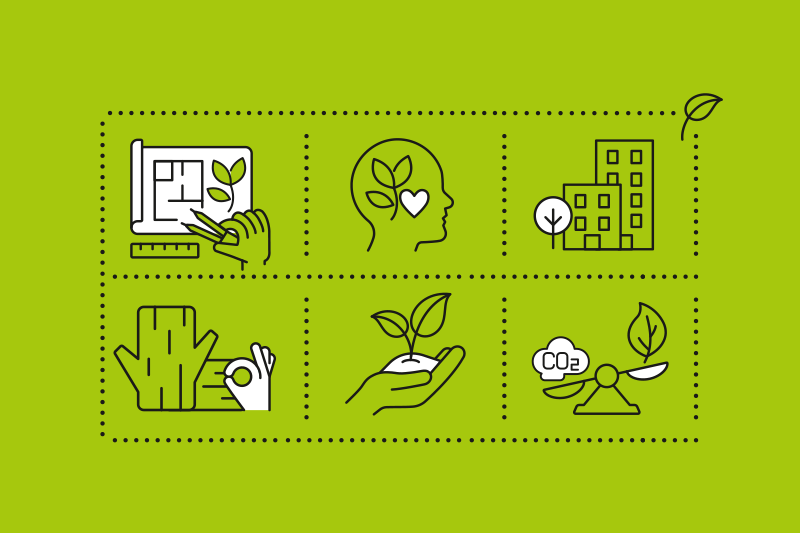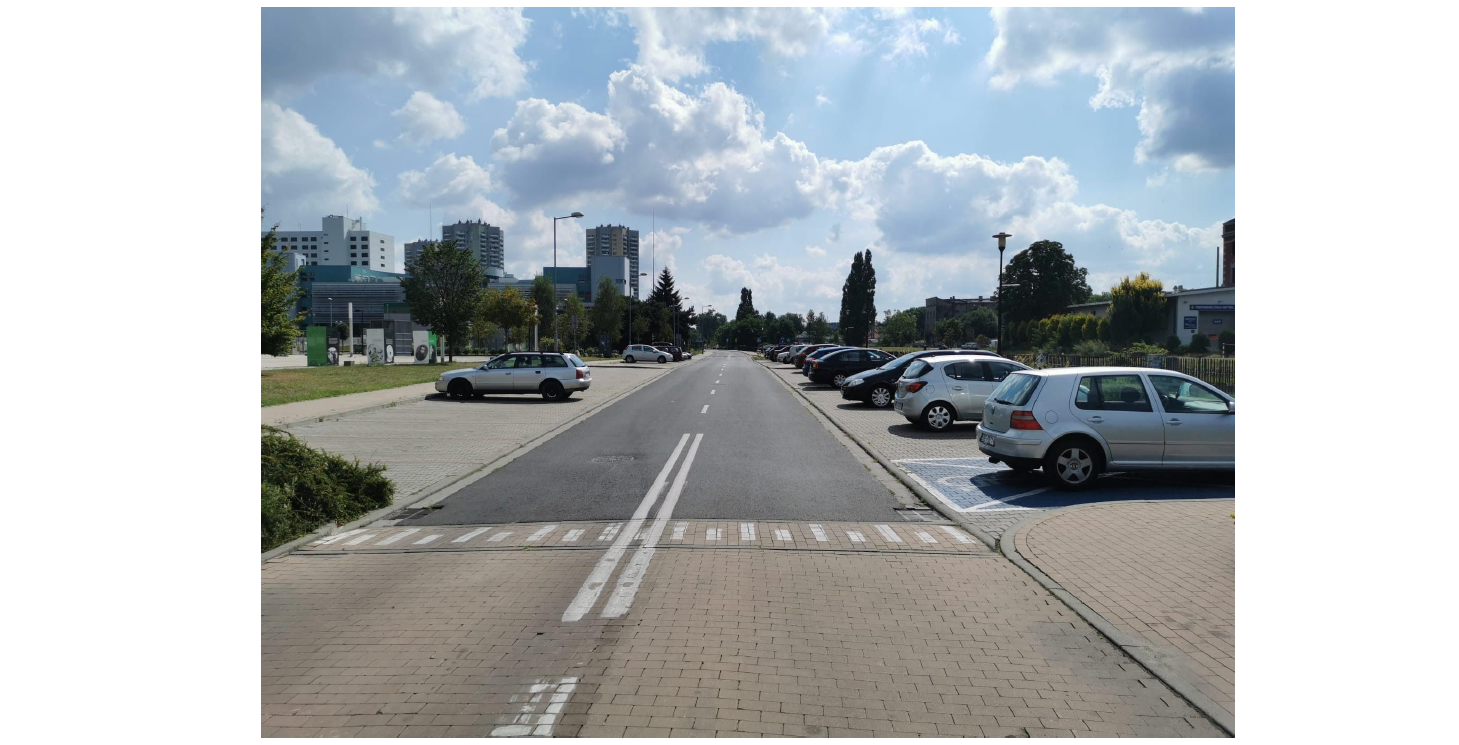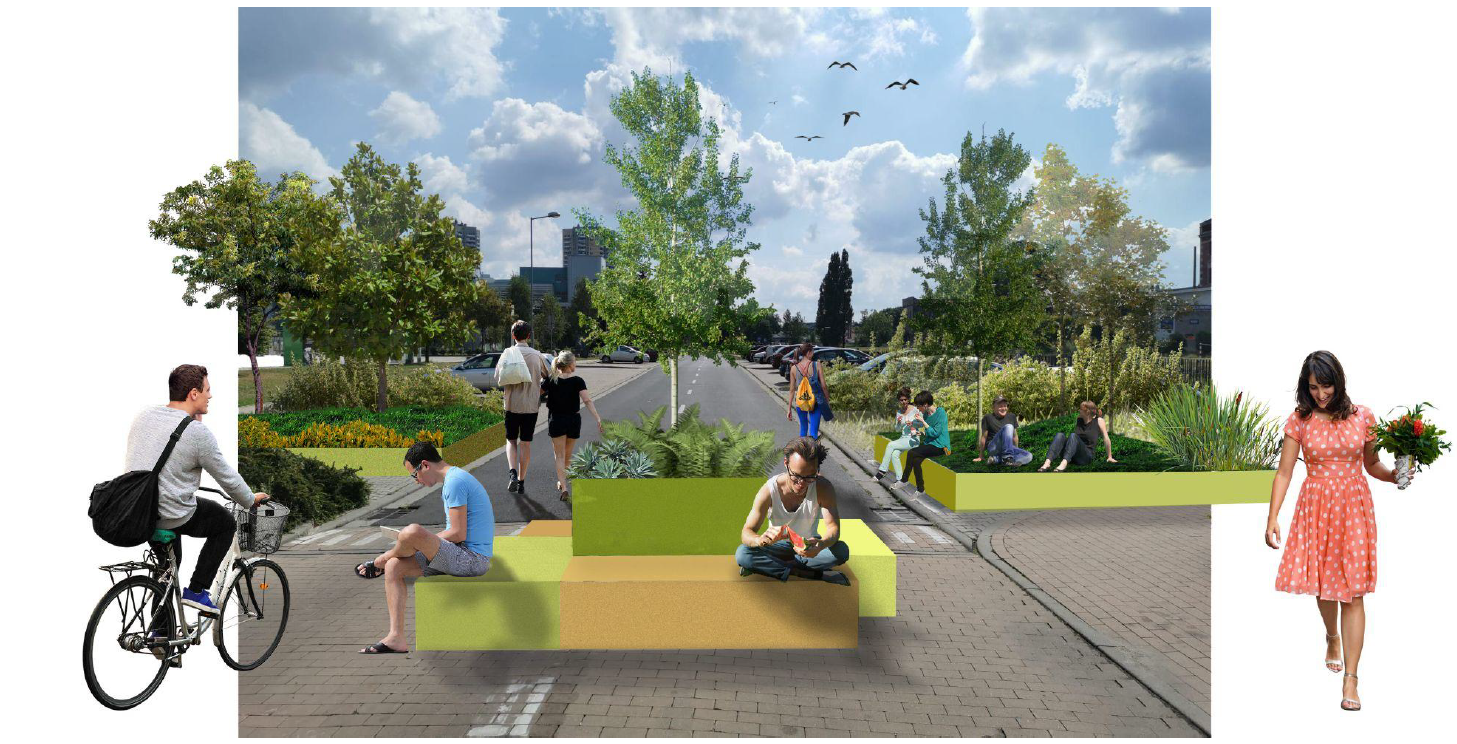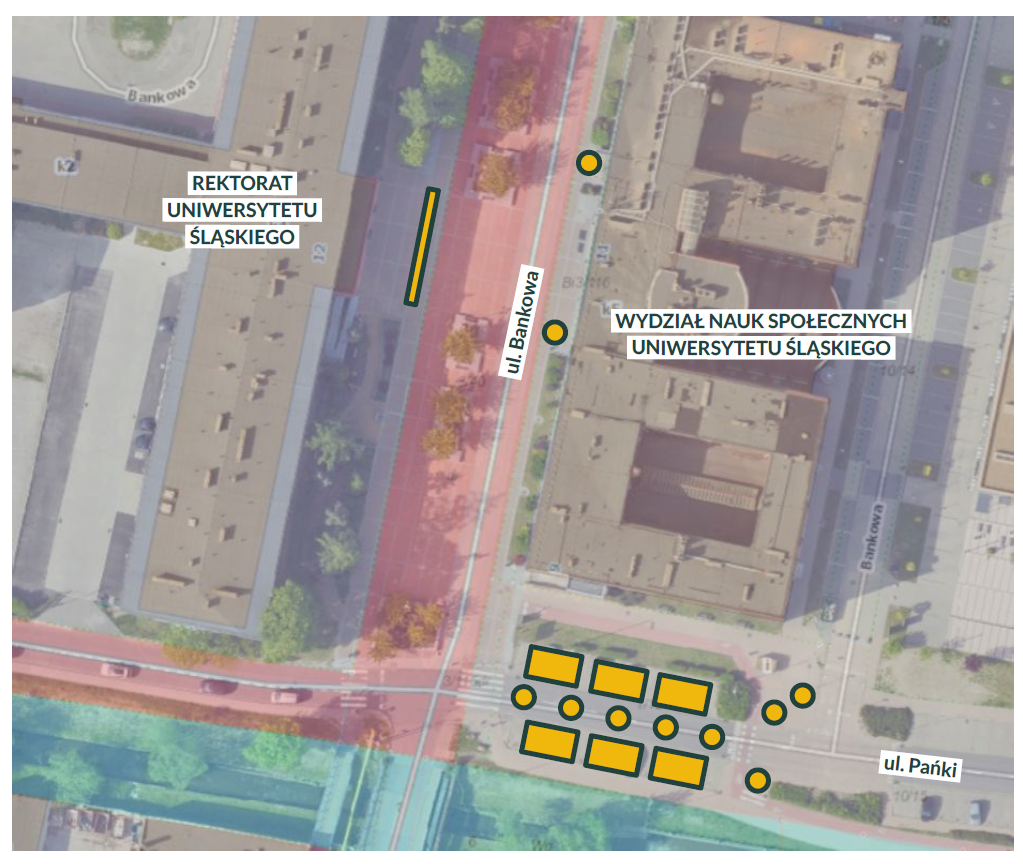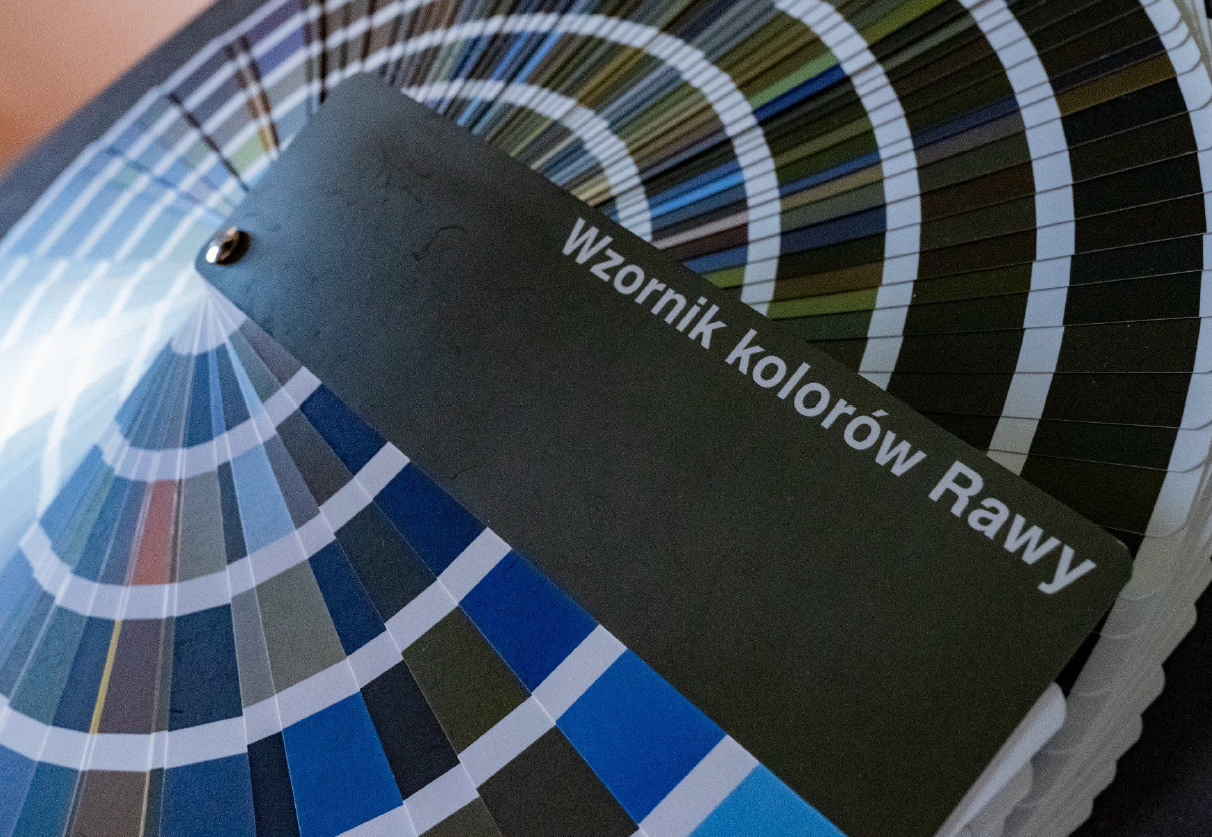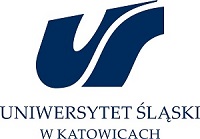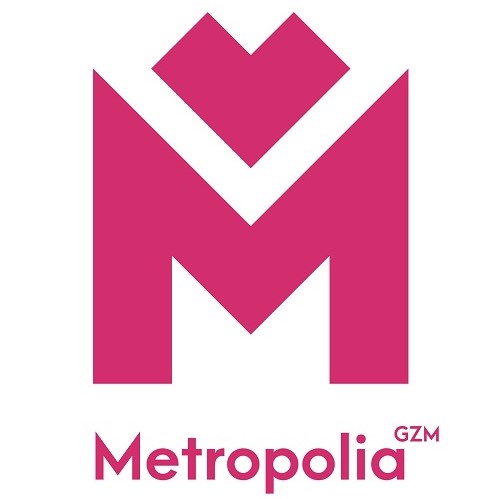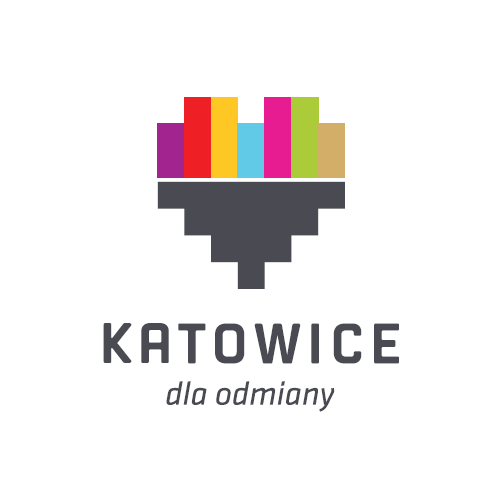View on ul. Pańki to the west
Visualisation of ul. Pańki to the west
What if we planned the city anew as a space filled with interacting residents, culture and science? What if the place we have in mind is full of green? One of the most important tasks the European City of Science 2024 faces is the transformation of space around Rawa (officially a watercourse dubbed by us a “river/non-river”). The key in the context of this action is the commencing process of urban prototyping, which is to bring real solutions – solutions that will bring a change!
Academic Consortium “Katowice – City of Science”
In collaboration with the Metropolis GZM, the Consortium will analyse the possibilities for transforming the downtown part of the Rawa river in Katowice along with connected to it streets, squares and footpaths into a river park. The process starts in the vicinity of the Rectorate of the University of Silesia on 24 September 2022 at 12 noon; the works will be carried out every day (apart from Sundays) to 30 September. More details about participation in the event are at the end of the article. Today, we want to invite you to join the talks at the table on 3 October at 10.00 a.m. at the pedestrian area in front of the University of Silesia Rectorate (ul. Bankowa 12). We will talk about the prototyping results.
Prototyping in Katowice is the beginning of implementing the model to answer, among others, the mobility problems reported by downtown residents as well as students and lecturers of Katowice universities. We have collected these issues during interviews carried out by the Metropolitan Prototyping School.
The efforts we make are based on searches for sustainable urban solutions conducted in natural sciences, humanities, engineering, architecture, and urban planning. The basis for the action is also guidelines in the planned UE rules on remediation of the environment degraded by human activity.
The new look of Rawa valley – what is our goal?
Based on a few principles, we strive to prepare a concept of transforming the downtown part of the Rawa valley in Katowice and the campus’s public spaces into a river park.
Above all, we want to make science a paramount basis for design – science open to a human living in a city. Thus, we create solutions for new academic facilities and public spaces so that their indoors and outdoors feature open-to-the-public laboratories, classrooms or areas for lectures, seminars and discussions; all this will compose the Network Science Centre. This will be the new look of science communication.
Network Science Centre in the heart of the city
Modern science communication requires recipients to be committed. Their exposure to science should be versatile and general, and therefore transparent. The world-unique centre will be the heart of an extraordinary system combining universities’ resources shared with scientists and residents. Our idea is not to establish yet another science centre in the form of a single building. We have decided that it is better to focus on setting up a larger and more dynamic body; such a solution provides harmony characteristic to modern urban systems and thus seems more appropriate to the to-be-created City of Science.
Green Science Zone – fewer cars, more nature
We want to connect the entire area with the vicinity in an even better way. We search for the safest and most comfortable solutions in reaching the public transport stops – a new railway stop, the existing railway station, bus and tram stops within the proximity of Market Square and al. Korfantego. Additionally, we want to slow down the traffic inside the campus – set out a 30 km/h zone, home zones and pedestrian-only spaces, and also manage the presence of cars by limiting the number of parking spaces (and balancing the needs by investments in underground and aboveground garages).
We want the final concept of the river park to envisage its restoration to nature and residents; for us, this is a key aspect as the place should combine recreation, ecological and research functions. We will indicate hardened areas that might be stripped of their concrete and asphalt layer and then planted with greenery so that they can collect rainwater. We will also compose new planting of native plants that are easy to maintain and do not require regular fertilising and watering. We believe such an attitude fully embraces the rules for sustainable development.
Urban prototyping in detail
An essential element of the planning process is to involve in the discussion on its direction the people who visit the Rawa valley now or will be visiting it in the future after it changes its function and shape. Therefore, we combine urban planning efforts with participation in an unusual experiment, joint physical construction and a temporary arrangement of a little space on the campus from 24 September until the end of the month (as seen in the picture below).
The prototype will consist of urban furniture. At the pedestrian area in front of the Rectorate, we will position a large table composed of smaller segments, which can be freely put together or apart. Thanks to that, we will create an installation to eat together during breaks between classes and to carry out casual and more formal academic talks. Within a part of ul. Pańki in front of the Faculty of Social Sciences, at the car park, we will build seats along with smaller and bigger planters; we will fill them with greenery at the end. In that way, we want to symbolically mark the idea of expanding the valley. Moreover, the plants we have chosen imitate the riverside environment.
The rule of integration of science and urban planning we have mentioned accompanied us also during programming the prototype. Colours of the technical design of the furniture were chosen using the “Rawa Colour Chart” developed by Justyna Szklarczyk-Lauer, PhD, DLitt based on her own field research. The Head of the Chair of Graphic Design at the Faculty of Design of the Academy of Fine Arts in Katowice has prepared photographic documentation of the river and based on the photos she specified the most typical colour combinations for each part of the river. In her searches, she captured not so much the real colours, because there are none of such, but her impressions. Needless to say, the approach that relies on weaving together scientific knowledge about the environment and a perspective of a person responsibly using its resources or contemplating and analysing its shape is dear to our hearts.
Rawa Colour Chart
Interviews with public space users
The experiment will be an excuse to talk about urban planning and scientific plans. If you are interested in our work, we would love to discuss the matter of how you imagine the future functioning of the landscaped part of the Rawa valley and campus. In that way, we wish to create a group of people committed to transforming the common space of the city and universities and develop a narrative combining numerous individual visions, not necessarily in tune today.
In October, we will carry out interviews on how an area subject to prototyping is used and how should it change. We will not ask about architectural ideas—as they require meticulous engineering thought—but about functions the space should implement to serve its current and future users to a better degree.
The conclusions of the talks will be used while developing the idea of permanent reconstruction.
Detailed information for the interested in participation in prototyping
When?
We start the actions on 24 September at 12 noon. The work will be carried out every day (apart from Sundays) until 30 September.
Today, we want to invite you to join the talks at the table on 3 October at 10.00 a.m. at the pedestrian area in front of the University of Silesia Rectorate (ul. Bankowa 12). Join us!
How to do it?
If you want to be a part of the change, like tinkering or simply want to learn something new, write an e-mail to a.hantkiewicz@metropoliagzm.pl or ewelina.budzinska-gora@us.edu.pl.






